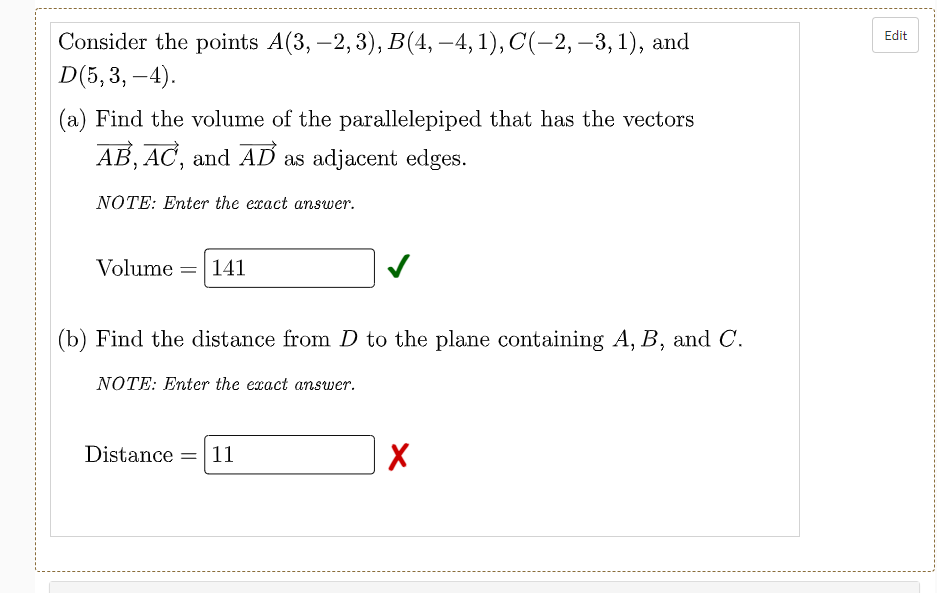Consider the points A(3, –2, 3), B(4, –4, 1), C(-2, –3, 1), and D(5, 3, –4). (a) Find the volume of the parallelepiped that has the vectors AB, AC, and AD as adjacent edges. NOTE: Enter the exact answer. Volume =| 141 (b) Find the distance from D to the plane containing A, B, and C. NOTE: Enter the exact answer. Distance = 11 %3D
Consider the points A(3, –2, 3), B(4, –4, 1), C(-2, –3, 1), and D(5, 3, –4). (a) Find the volume of the parallelepiped that has the vectors AB, AC, and AD as adjacent edges. NOTE: Enter the exact answer. Volume =| 141 (b) Find the distance from D to the plane containing A, B, and C. NOTE: Enter the exact answer. Distance = 11 %3D
Algebra & Trigonometry with Analytic Geometry
13th Edition
ISBN:9781133382119
Author:Swokowski
Publisher:Swokowski
Chapter3: Functions And Graphs
Section3.3: Lines
Problem 31E
Related questions
Question

Transcribed Image Text:Edit
Consider the points A(3, –2,3), B(4, –4, 1), C(-2, –3, 1), and
D(5, 3, –4).
-
(a) Find the volume of the parallelepiped that has the vectors
AB, AC, and AD as adjacent edges.
NÓTE: Enter the exact answer.
Volume
=|141
(b) Find the distance from D to the plane containing A, B, and C.
NOTE: Enter the exact answer.
Distance = 11
Expert Solution
This question has been solved!
Explore an expertly crafted, step-by-step solution for a thorough understanding of key concepts.
Step by step
Solved in 3 steps

Recommended textbooks for you

Algebra & Trigonometry with Analytic Geometry
Algebra
ISBN:
9781133382119
Author:
Swokowski
Publisher:
Cengage

Algebra & Trigonometry with Analytic Geometry
Algebra
ISBN:
9781133382119
Author:
Swokowski
Publisher:
Cengage